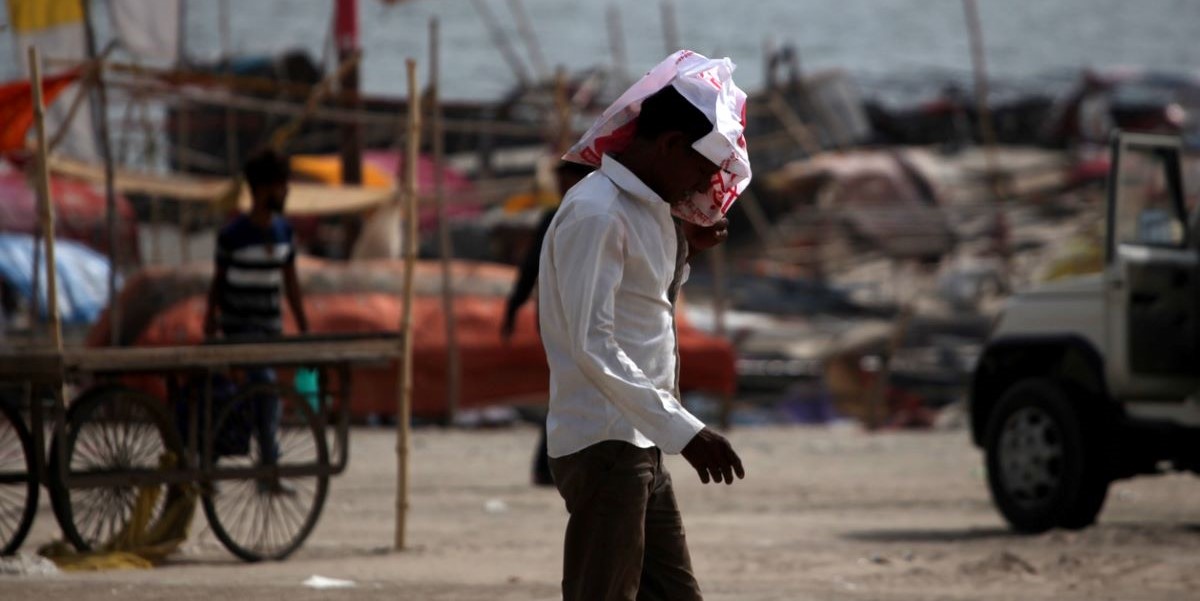Health officials caution that heatwaves directly cause heatstroke, dehydration, and worsen heart and respiratory issues, while indirectly overburdening hospitals, disrupting farming, education, and limiting outdoor work hours
Published Apr 30, 2025 | 7:00 AM ⚊ Updated Apr 30, 2025 | 7:00 AM

Heat wave. (iStock)
Synopsis: In 2024, heatwaves claimed at least 10 lives in Telangana, prompting urgent action. With 2025 expected to bring harsher conditions, the state launched a comprehensive Heat Action Plan to protect its 35 million residents. Data shows districts like Nalgonda faced record heatwave days, while the IMD warns of worsening conditions from April to June, intensifying health risks
At least 10 people lost their lives to heatwave conditions in Telangana in 2024, and state authorities are warning that the worst may still be ahead. With 2025 expected to bring even more intense and prolonged heatwaves, the Telangana government has rolled out a comprehensive Heat Action Plan to avert a public health crisis and protect its 35 million residents—over 16 million of whom live in high-risk zones.
According to the Telangana Heat Action Plan (HAP) 2025, extreme heat is no longer an isolated meteorological event but a recurring and escalating threat. Data from the Telangana State Development Planning Society (TGDPS) shows that districts like Nalgonda experienced up to 81 heatwave days in 2024—the highest in over a decade—while others like Suryapet recorded 54 days.
The India Meteorological Department (IMD) has forecast above-normal heatwave days in Telangana for the upcoming April to June season, exacerbating public health concerns.
On other hand as temperatures begin to climb, the threat has already begun to materialise.
On 29 April the health department has also issued an advisory as the IMD Hyderabad office predicts dry weather for the next two days, with an orange alert (41°C–44°C) forecasted over the next four days for 18 districts including Adilabad, Jagtial, Gadwal, Kamareddy, Karimnagar, Asifabad, Mahabubnagar, Mancherial, Medak, Nagarkurnool, Narayanpet, Nirmal, Nizamabad, Peddapalli, Siricilla, Sangareddy, Vikarabad, and Wanaparthy.
In the advisory dated April 29, 2025, Dr. B. Ravinder Nayak, Director of Public Health & Family Welfare, emphasized the government’s readiness and urged people to remain cautious:
“As a part of precautionary measures, the Government has made elaborate arrangements by providing the special beds, I.V. fluids, essential medicines at all the public health facilities and ORS sachets are made available with ANMs / ASHAs / Anganwadi workers to meet any exigencies.”
The advisory lists specific guidance under “Do’s and Don’ts” to prevent heat-related illness:
Stay hydrated by drinking sufficient water even if not thirsty and using ORS or homemade drinks like lemon water and buttermilk. Carrying water while traveling and eating seasonal fruits with high water content is advised.
Stay covered and indoors: People should wear light-colored, loose cotton clothing, use head coverings when outdoors, and keep windows and curtains closed during the day to reduce indoor heat.
Limit outdoor activity, especially between 12:00 PM and 3:00 PM, and avoid cooking during peak heat hours unless the area is well-ventilated.
Avoid dehydrating substances such as alcohol, tea, coffee, and sugary or carbonated drinks, as well as high-protein, salty, or stale food.
The advisory also warns of danger signs of heatstroke, which include nausea, red and dry skin, high body temperature (≥40°C), dizziness, rapid heartbeat, shallow breathing, muscle cramps, and altered mental status such as confusion or seizures. The public is urged to seek immediate medical attention from the nearest government health facility if any of these symptoms are observed.
The report paints a stark picture of vulnerability:
Districts including Khammam, Mancherial, Warangal, Karimnagar, and Jagtial are categorized among the most heatwave-prone areas, based on historical weather data spanning a decade.
Health officials warn that heatwaves have both direct and indirect effects on public health. The direct impacts include heatstroke, dehydration, fainting, and exacerbation of respiratory and cardiovascular diseases. Indirectly, heatwaves strain hospital resources, reduce outdoor working hours, disrupt agriculture, and impair educational services.
“The current trend shows not just a spike in the number of heatwave days, but also in their intensity and impact on health systems,” said a senior official from the Health Department. “We’re seeing vulnerable groups—infants, pregnant women, the elderly—being hit the hardest.”
Data from 2014 to 2023 shows a fluctuating death toll, with a staggering 541 deaths recorded in 2015, 324 in 2016, and a dip in fatalities during COVID years, only to see a resurgence in 2024.
In anticipation of worsening conditions, the Telangana government has launched a robust, inter-departmental response through the HAP 2025. Key measures include:
The plan highlights the risk to over 35,000 Anganwadi Centres that offer critical nutrition services, warning that prolonged heatwaves could disrupt child and maternal healthcare. Similarly, outdoor workers—especially those under MGNREGA—are advised to avoid peak sun hours (12 PM–4 PM).
The Education Department has been directed to adjust school hours, ensure hydration access through hourly “water bells”, and avoid open-air activities altogether.
Addressing the Urban Heat Island Effect, Telangana has reaffirmed its commitment to the Cool Roof Policy, aiming to cover 300 sq km in reflective roofing by 2031. The policy, mandatory for new government and commercial buildings, seeks to lower ambient urban temperatures by up to 4°C, providing relief in dense cityscapes like Hyderabad.
(Edited by Ananya Rao)
